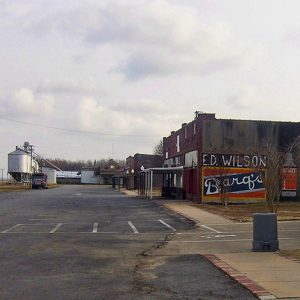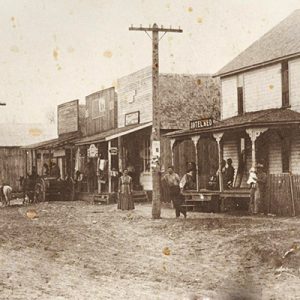calsfoundation@cals.org
Keo (Lonoke County)
| Latitude and Longitude: | 34°36’10″N 092°00’33″W |
| Elevation: | 230 feet |
| Area: | 4.92 square miles (2020 Census) |
| Population: | 207 (2020 Census) |
| Incorporation Date: | March 17, 1916 |
Historical Population as per the U.S. Census:
|
1810 |
1820 |
1830 |
1840 |
1850 |
1860 |
1870 |
1880 |
1890 |
1900 |
|
– |
– |
– |
– |
– |
– |
– |
– |
– |
– |
|
1910 |
1920 |
1930 |
1940 |
1950 |
1960 |
1970 |
1980 |
1990 |
2000 |
|
175 |
325 |
267 |
253 |
200 |
237 |
226 |
208 |
154 |
235 |
|
2010 |
2020 | ||||||||
|
256 |
207 |
Keo is a town in southern Lonoke County. It is located on U.S. Highway 165 between Scott (Pulaski and Lonoke counties) and England (Lonoke County).
The region around Keo has long been inhabited, as is demonstrated by the town’s proximity to the Toltec Mounds. White settlers gradually moved into the area during territorial times and early statehood. The Dunham family and Cobb family were two of the region’s main property owners following the Civil War. Lafayette Cobb, who moved to the area in 1873, owned a general store. Established in his store in 1880, the post office was variously called Cobb Settlement and Cobbs. Cobb was also justice of the peace in that part of Lonoke County. Six cotton gins operated seasonally near Cobb Settlement.
In 1887 and 1888, the St. Louis, Arkansas and Texas Railway created a line connecting Altheimer (Jefferson County) to Argenta—now North Little Rock (Pulaski County). The line passed one mile south of Cobb Settlement. As was the case with many other communities in Arkansas, citizens of the settlement moved their homes and businesses to be near the railroad. As early as 1884, the Southwestern Improvement Association was selling lots along the projected rail line. The new community was named Keo in honor of Keo Dooley, the daughter of Judge P. C. Dooley, who was another prominent landowner in the late nineteenth century. Keo’s post office opened in 1889. The railroad later became part of the St. Louis Southwestern Railway, known also as the Cotton Belt. The Cobb Settlement post office closed in 1916.
Cobb opened a second general store in Keo, and soon the community had seven general stores, two blacksmiths, a sawmill and shingle factory, a bank, a schoolhouse, several cotton gins, a restaurant, a hotel, a real estate office, a drugstore, a feed stable, several butchers, a Baptist church, and several doctors. The town was incorporated in 1916.
Fires destroyed many of the buildings in Keo in 1913 and 1926. In 1927, floodwaters approached the town but did not cause damage within its borders. Many refugees from the surrounding farms took shelter on the grounds of the public school during the Flood of 1927.
Keo gained some notoriety in 1892 when Hamp Biscoe, his wife, and their thirteen-year-old son were murdered in their home following a dispute with a neighbor. The town received further negative publicity in 1910 when Frank Pride and Laura Mitchell, both African Americans, were lynched by a mob of African Americans after the couple was accused of murdering Pride’s wife and Mitchell’s husband. Pride and Mitchell were being transported to Lonoke (Lonoke County) following their arraignment in Keo when they were lynched.
In 1926, Arkansas established its first highway system. Arkansas Highway 11 passed through Keo on a route parallel to the railroad. The highway later became U.S. Highway 165.
Keo weathered the Depression, but after the middle of the twentieth century, the cotton crop began to lose its luster. The Morris and Moren cotton gin closed in the mid-1960s, and another gin closed around 1970. Although the Cobb cotton gin continued to be used into the twenty-first century, it ceased operating in 2008. The gin still exists, although much of its property was destroyed by fire after a gasoline truck ran off the road, creating a blaze.
The movie Shotgun Stories—written and directed by Little Rock (Pulaski County) native Jeff Nichols and released in 2007—was partly filmed in the Keo area in 2005. On June 15, 2011, the Keo Commercial Historic District (which includes Charlotte’s Eats & Sweets and Morris’ Antiques) was added to the National Register of Historic Places. The population of Keo in 2010 was 256, with 197 white citizens and forty-four African-American citizens.
For additional information:
City of Keo, Arkansas. http://www.keoar.com/ (accessed June 17, 2022).
Hope, Holly. “Keo Commercial Historic District.” National Register of Historic Places nomination form, 2011. On file at Arkansas Historic Preservation Program, Little Rock, Arkansas. Online at http://www.arkansaspreservation.com/National-Register-Listings/PDF/LN0239.nr.pdf (accessed October 22, 2020).
McGraw, Shirley, and Carol Bevis. Lonoke County, Arkansas, A Pictorial History. Virginia Beach: Donning Company, 1998.
Steven Teske
Butler Center for Arkansas Studies
 Keo United Methodist
Keo United Methodist  Keo Commercial Historic District
Keo Commercial Historic District  Keo Street Scene
Keo Street Scene  Lonoke County Map
Lonoke County Map 




Comments
No comments on this entry yet.